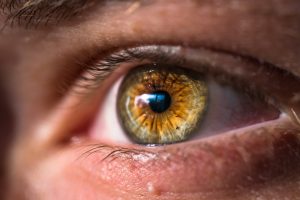Do you know that you can die from drinking too much water?
Yet every living being needed water to live.
The radiation that “gives you cancer” is uncontrolled, caused by some out-of-control source (such as a nuclear reaction), and what it does is kill cells indiscriminately. It’s pretty much unavoidable to suffer adverse effects, including cancer or simply dying in the short term.
On the other hand, radiation therapy is carefully tailored to your specific cancer, both in location and intensity, trying to kill as many cancer cells as possible -and spare (also to the extent possible) healthy ones. It can still give you another cancer, but doctors weigh the pros and cons and there are many cases (like mine) where the pros tilt the call in favour of applying radiation.
It’s not an exact science. For each type of cancer, its severity and the patient’s overall health and age, oncologists come up with a proposed treatment. You won’t get it if you’re young and the odds of radiation treatment causing more harm than good outweigh the benefits. But often it’s the opposite.
I had radiation as a follow-up to my second brain tumour surgery. The first surgery was successful, and since pathology indicated a relatively low-grade cancer, doctors decided to wait and see without any further treatment (knowing, as I knew too, that some cancer cells always remain hidden and eventually grow a new tumour: this type of brain tumour in adults is essentially incurable, so the treatment is meant to extend your life with the best possible quality for as long as possible). The second surgery pathology report indicated a higher grade, for which the recommended treatment includes radiation followed by chemo. Still, the patient is not pushed or duped to sign consent without understanding it -my oncologist explained the pros and cons and made her recommendation, but ultimately gave me the right of refusal (I accepted it).
On the first day, you get a tailor-made head mask, meant to rigidly tie your head to the radiation table and avoid every little unwanted movement, so that the radiation is administered exactly where the radio oncologist wants. Mine looked like this:

Every day of treatment, the first step is a “scan” of your head to ensure you are positioned exactly where you need to be and adjust the radiation device accordingly. Only then do you get the radiation treatment?
The dosage is also calculated by the radio oncologist for the best possible efficiency, killing as many cancer cells as possible without exceeding a certain “lifetime dosage”. Since I’m now maxed out, I should be careful with future doses… I try to avoid unnecessary X-rays (my dentist must think I’m just cheap), but if my oncologist decides to try a radiation treatment in the future as a Hail Mary-type clinical trial, I would consider it.
And still, it’s not harmless in the short term. Your hair dies in droves, so the best course of action is to shave your head (no biggie for a guy, but more distressing for women). Some 5 years after treatment, my hair now grows back, but in the radiation zone, it looks weird, like twisted wire, while in the other half of the head, it grows normally. That’s why I keep shaving my head, though it’s not necessary anymore.
Can it give me another cancer in the future? Yes, it can. As I wrote before, this treatment is what, according to statistics, yields the best-combined chance of a relatively long survival with good quality of life. And in my case, the latter is a winner -I have no symptoms, other than very occasional short pangs of pain in the head which don’t affect my everyday life at all.
Anyway, 5 years after radiation (and 12 years after first diagnosed with a brain tumour), this is what I look like. It could be worse!
Open letter from: Ernesto Gasulla





